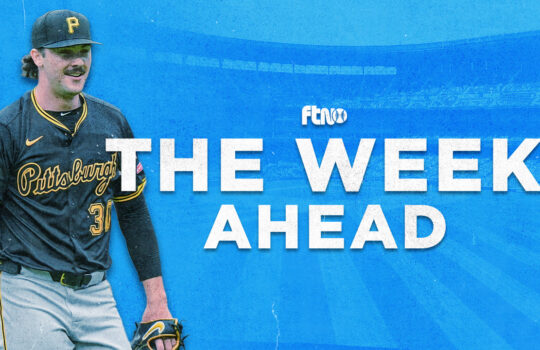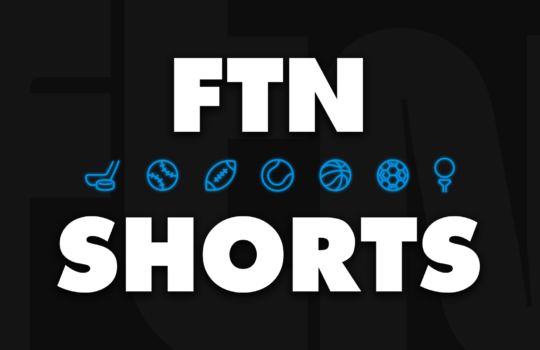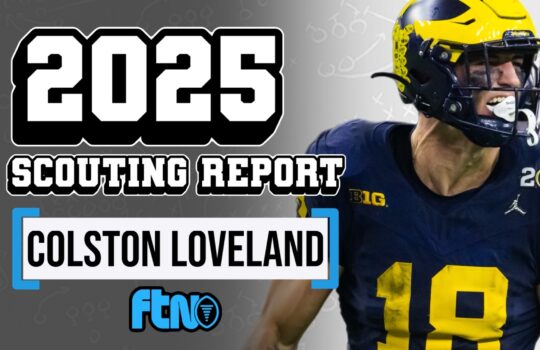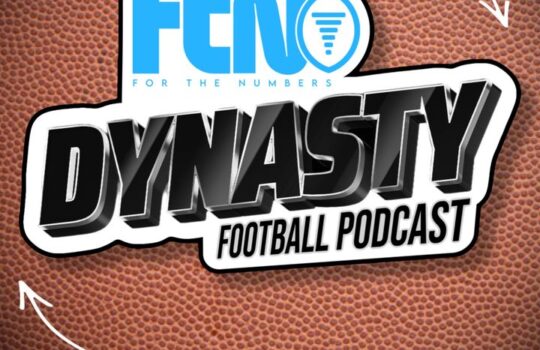
Baseball lends itself to numerical intrigue — there have long been bountiful statistics surrounding the game, and in today’s analytics-heavy version, there are more numbers than ever before. Knowing what numbers are meaningful and from which actionable information can be ascertained can make all the difference. The margins have never been thinner, and the impact of every discernible edge has never been more pronounced. Here are some of the numbers that jump out at me when taking a look at Tuesday’s slate.
1. 57.6%
That would be Dakota Hudson’s career ground ball rate. If your reaction to that is that it seems extremely high, you’d be correct. In 2021, the leader among qualified pitchers was Luis Castillo at 56.6%. In 2020 (an abbreviated year, subject to pesky small sample size fluctuation), it was Framber Valdez at 60.0%. In 2019, it was Hudson himself, in his first full year in the bigs, at 56.9%. So if you’re keeping score at home, his career average is actually higher than the entire year in which he led the league. Any way you slice it, the guy gets a ridiculous amount of ground balls.
Hudson’s matchup with the Royals Tuesday isn’t particularly daunting, and the Royals are middle of the pack (13th in 2021) when it comes to ground balls, but odds are they will produce a higher rate than normal amount of them here. With a solid defense behind Hudson that contains defensive stalwarts Nolan Arenado and Paul Goldschmidt at the corners, those ground balls will likely result in outs more often than not. While we never expect Hudson to have a dominant strikeout performance, he’s just not that sort of pitcher, and on top of that he’s not likely to put up a huge fantasy score due to not being fully stretched out, he should be efficient and his run prevention skills should be on full display.
Takeaway: I have a modicum of interest in Hudson at his $6,300 DK price, and I probably won’t be stacking Royals
2. 2 vs. 1
As this is the sixth game of the season for some teams, we are starting to see the first wave of pitchers who are on their second rotation turn. The pitchers on the slate that are going for a second time are:
- Patrick Corbin, Washington Nationals
- Madison Bumgarner, Arizona Diamondbacks
- Yu Darvish, San Diego Padres
Not only are they all going for a second time — meaning they are likely to be slightly more built up than a pitcher going a first time — they are all facing a pitcher going a first time (so obviously not facing each other). We also have to consider matchup, so I’m not particularly excited about rostering Corbin against the Braves or Bumgarner against the Astros, but I am extremely interested in Darvish against the extremely injured Giants (and a first-turn-in-the-rotation Alex Cobb). Darvish threw 92 pitches in his first start against the Diamondbacks, which is very nearly a full workload already, so being the only pitcher on a second start in a good matchup makes him extremely enticing.
The pricing algorithms have also noticed this, as he is the most expensive pitcher on both the DK and FD main slates, but with good reason. To this point, we’ve wanted to avoid paying a premium for pitching due to limited buildup resulting in limited ceilings for pitchers, but Darvish represents a clear-cut first opportunity to deviate from that.
Takeaway: Roster Darvish everywhere
3. 99.1
While that is a number that typically gives off FM radio vibes, it is in this case applicable to Jesús Luzardo’s top velocity this spring. The second-largest increase in spring velocity (he averaged 95.8 last season) behind everyone’s favorite internet video sensation Mitch Keller (who was knocked around for 6 hits and 4 runs while striking out only 4 in his 2022 debut), Luzardo may have more staying power with his skill set and previously displayed ability to miss bats in combination with his velocity increase.
Luzardo isn’t exactly known for being efficient with his pitch counts, and like everyone, isn’t built up to a full starter’s workload (and may never be), but he warrants consideration at a fair if not a hair low DK price of $7,300. We’ll want to watch this Angels lineup closely, if Mike Trout misses with an illness again, and further if Shohei Ohtani gets his first day off this season (he very well could, as the Angels are off tomorrow and Ohtani is scheduled to pitch Thursday), it would leave the Angels offense fairly punchless against a Luzardo who is primed to rack up punchouts.
Takeaway: Consider rostering Luzardo, do so with even more vigor if we get a watered-down Angels lineup
4. 50%
That would be Chris Archer’s hard contact rate in all of his 19 innings last season. Yes, the sample size is stupidly small, but the result is also outrageously extreme. He was a pitcher coming off an injury and past his prime so bad results were probably to be expected, but he is now also older and pitching in a worse environment and Tuesday in particular happens to be pitching against the best lineup not just in the current season of MLB but perhaps in any season in the modern era.
About that Dodgers lineup — the studs are still extremely expensive, but if you are able to mix in a $3,100 Gavin Lux and a $2,900 Cody Bellinger with the expectation that they will likely be coming to the plate with men on base more often than not, you should be able to get to a full stack of Dodgers pretty easily. And yes, I am aware that the Dodgers were a major letdown at Coors in their opening series. Coors in April is not the same as Coors in July, and anything can happen over a three-game series. I’ll be going back to the Dodgers well, and going plenty.
Takeaway: Stack Dodgers every which way
5. 30, 5
The number of feet further back and taller, respectively, the new Orioles left field fence is. While this was at least in part designed to attract starting pitchers to Baltimore as a more attractive destination (and perhaps retain John Means), it obviously also has the same impact for visiting pitchers and has substantial benefit to Tuesday’s iteration of those — Eric Lauer.
Lauer gives up plenty of fly balls (38% for his career) and line drives (24% for his career), as well as hard contact (39% for his career) and as such is a frequent target for stacking against when in what is thought of as a positive run-scoring environment. In Tuesday’s matchup at Camden — which will be considered by many as an opportunity for power-hitting RHBs like Trey Mancini, Ryan Mountcastle and Austin Hays to tee off on Lauer — we will want to lower our expectations a bit, as we may see more singles but fewer extra base hits and certainly fewer HRs from this group.
Takeaway: Curb your enthusiasm regarding Orioles RHB power bats — but probably still don’t roster Lauer as he is the third-most expensive pitcher on the slate and closer to middle of the pack in terms of talent and matchup
















































 New York Jets
New York Jets  New England Patriots
New England Patriots  Miami Dolphins
Miami Dolphins  Buffalo Bills
Buffalo Bills  Pittsburgh Steelers
Pittsburgh Steelers  Cleveland Browns
Cleveland Browns  Cincinnati Bengals
Cincinnati Bengals  Baltimore Ravens
Baltimore Ravens  Tennessee Titans
Tennessee Titans  Jacksonville Jaguars
Jacksonville Jaguars  Indianapolis Colts
Indianapolis Colts  Houston Texans
Houston Texans  Las Vegas Raiders
Las Vegas Raiders  Los Angeles Chargers
Los Angeles Chargers  Kansas City Chiefs
Kansas City Chiefs  Denver Broncos
Denver Broncos  Washington Commanders
Washington Commanders  Philadelphia Eagles
Philadelphia Eagles  New York Giants
New York Giants  Dallas Cowboys
Dallas Cowboys  Minnesota Vikings
Minnesota Vikings  Green Bay Packers
Green Bay Packers  Detroit Lions
Detroit Lions  Chicago Bears
Chicago Bears  Tampa Bay Buccaneers
Tampa Bay Buccaneers  New Orleans Saints
New Orleans Saints  Carolina Panthers
Carolina Panthers  Atlanta Falcons
Atlanta Falcons  San Francisco 49ers
San Francisco 49ers  Seattle Seahawks
Seattle Seahawks  Los Angeles Rams
Los Angeles Rams  Arizona Cardinals
Arizona Cardinals 










 Boston Celtics
Boston Celtics  Brooklyn Nets
Brooklyn Nets  Philadelphia 76ers
Philadelphia 76ers  New York Knicks
New York Knicks  Toronto Raptors
Toronto Raptors  Chicago Bulls
Chicago Bulls  Detroit Pistons
Detroit Pistons  Milwaukee Bucks
Milwaukee Bucks  Cleveland Cavaliers
Cleveland Cavaliers  Indiana Pacers
Indiana Pacers  Orlando Magic
Orlando Magic  Atlanta Hawks
Atlanta Hawks  Charlotte Hornets
Charlotte Hornets  Miami Heat
Miami Heat  Washington Wizards
Washington Wizards  Denver Nuggets
Denver Nuggets  Minnesota Timberwolves
Minnesota Timberwolves  Oklahoma City Thunder
Oklahoma City Thunder  Portland Trail Blazers
Portland Trail Blazers  Utah Jazz
Utah Jazz  LA Clippers
LA Clippers  Golden State Warriors
Golden State Warriors  Los Angeles Lakers
Los Angeles Lakers  Phoenix Suns
Phoenix Suns  Sacramento Kings
Sacramento Kings  Dallas Mavericks
Dallas Mavericks  Houston Rockets
Houston Rockets  Memphis Grizzlies
Memphis Grizzlies  New Orleans Pelicans
New Orleans Pelicans  San Antonio Spurs
San Antonio Spurs 










